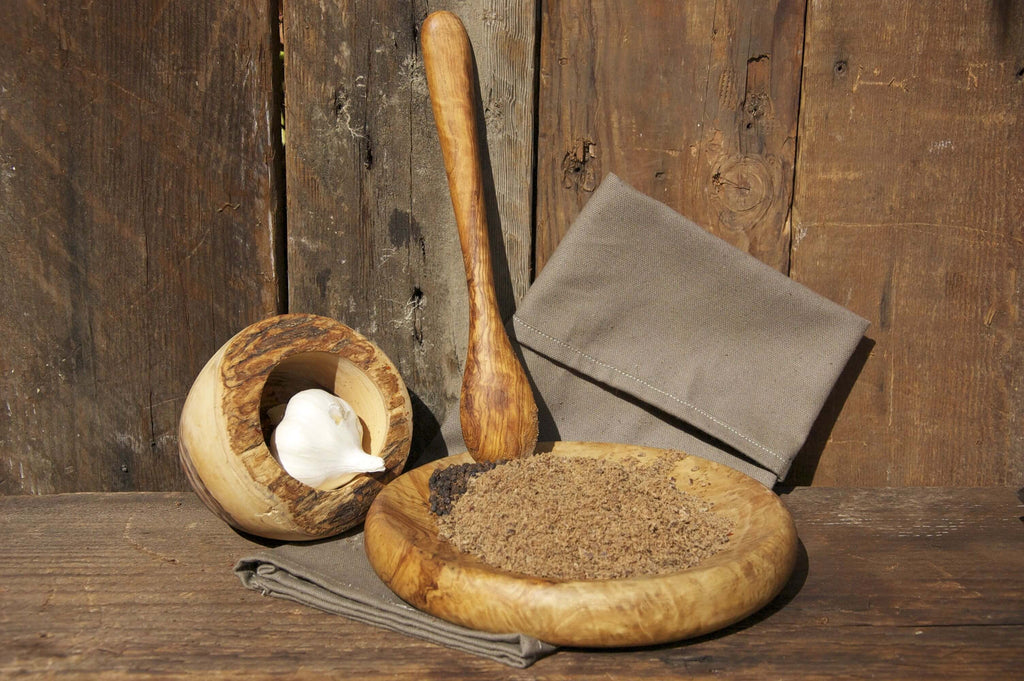Machaca is spiced and dehydrated beef that's shredded to a light and airy consistency. It comes from the Spanish word machacar, to smash or crush.
A staple of Northern Mexican cooking—including the states of Sonora, Sinaloa, and Nuevo León—Machaca is a non-perishable provision that has been consumed for hundreds of years.
Machaca is also commonly known as jerky chew or beef jerky chew. This shredded beef jerky is an old-time jerky favorite, commonly found in a can, tin, or jar; perfect for on-the-go snacking.
What is Machaca?

Traditional Machaca is a Northern Mexican type of dried meat, often made from beef or pork. Slices or strips of meat are traditionally rubbed with simple spices and left outside to dry under the desert sun. After a few days of air-drying, the meat maintains a jerky-like taste and texture.
The next and final step is what makes Machaca, Machaca. The jerky is pounded, crushed, or shredded–traditionally by hand, with a large mortar and pestle–to a light and airy consistency. At this point, the Machaca can be stored in an airtight container or bag for later use.
This ancient preservation technique is especially useful when access to fresh beef is difficult. And while it's not a complete replacement for fresh beef, it is a handy ingredient to have on hand. Since the technique concentrates the beef's flavor, you're able to do much more with much less.
Origins of Machaca
The ranchers and cowboys of Northern Mexico are said to be responsible for the development of drying beef with chilis and other native spices.
Air drying beef as a technique to preserve food eventually evolved as the shredding technique was introduced, creating Machaca. T
he air-dried beef prior to shredding is known as "Carne Seca" which means "dried meat."
How to Make Machaca

Our Machaca is made with choice cuts of lifter meat.
This unique cut of beef, also known as cap or wedge meat, comes from the front section of the backbone. It offers the perfect lean-to-fat ratio—just enough fat for flavor and richness while still maintaining leanness for full drying.
Most jerky producers avoid this cut of meat because it's more expensive than standard jerky cuts, but we feel the increase in flavor and texture is well worth it.
The thick cuts of lean American beef are seasoned with a rich medley of natural spices—black peppercorns, sea salt, garlic, and smoked paprika—then slow-cooked for a minimum of five hours.
Once dried, the thick-cut jerky is shredded to a fine & airy consistency.
How to Use Machaca
 Machaca is most commonly used to make the dish Machaca con Huevos. This is a breakfast dish consisting of vegetables, eggs, and Machaca.
Machaca is most commonly used to make the dish Machaca con Huevos. This is a breakfast dish consisting of vegetables, eggs, and Machaca.
The Machaca rehydrates as it's simmering in the juices of the chopped tomatoes, onions, and jalapeños. After it's rehydrated eggs are scrambled into the mixture, and then it's ready to garnish and serve.
It's a traditional dish in the northern Mexican state of Nuevo León that is commonly eaten at breakfast.
As a beef jerky business that produces Machaca on a weekly basis, we've found a number of fun uses for this handy ingredient.
If you're a meat maniac following the Carnivore Diet check out our Carnivore Diet Breakfast Tacos or our Korean Steamed Egg with Machaca.

If you're following a different low-carb diet such as the ketogenic diet, check out some of the following keto-friendly machaca recipes: Keto Machaca Deviled Eggs, Keto Spinach Artichoke Stuffed Mushrooms with Machaca.
If you aren't one to care about counting carbs, then we've got just the recipes for you. In a hurry? Check out our Beef Stick Fried Rice Recipe–inspired by Chinese sausage fried rice. Looking to test out some new food trends? Check out our version of the viral TikTok Baked Feta Pasta with Machaca.
The Bottom Line
Like an indestructible pocket knife, Machaca is an incredibly diverse ingredient rooted in Mexican cuisine with a near-infinite shelf life. So, what are you waiting for?


